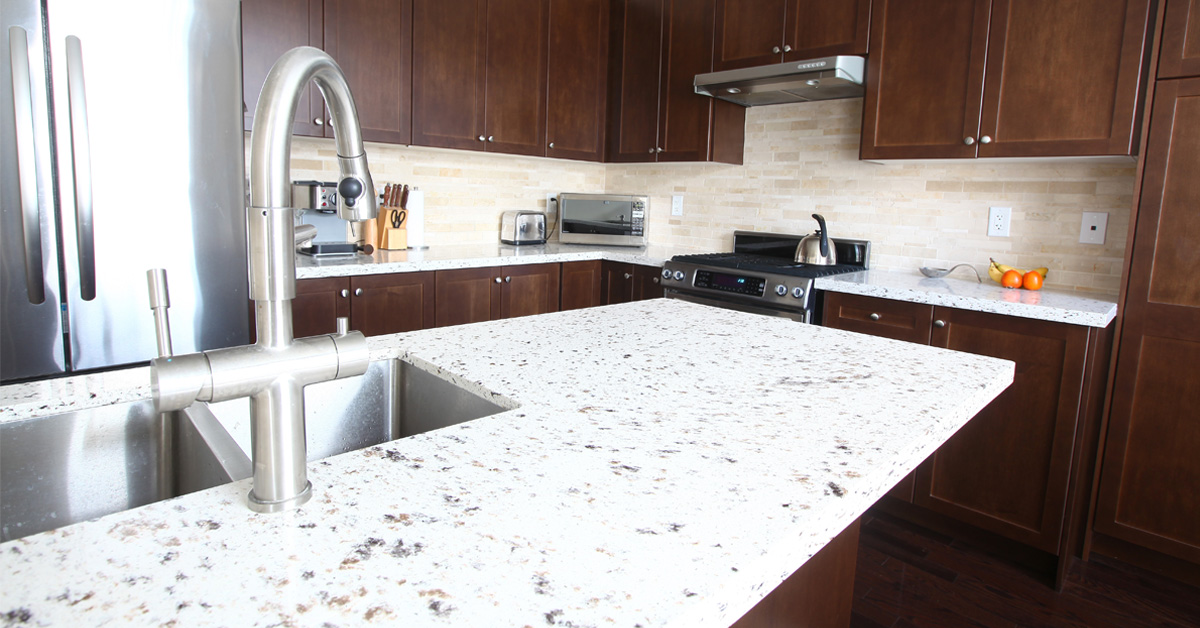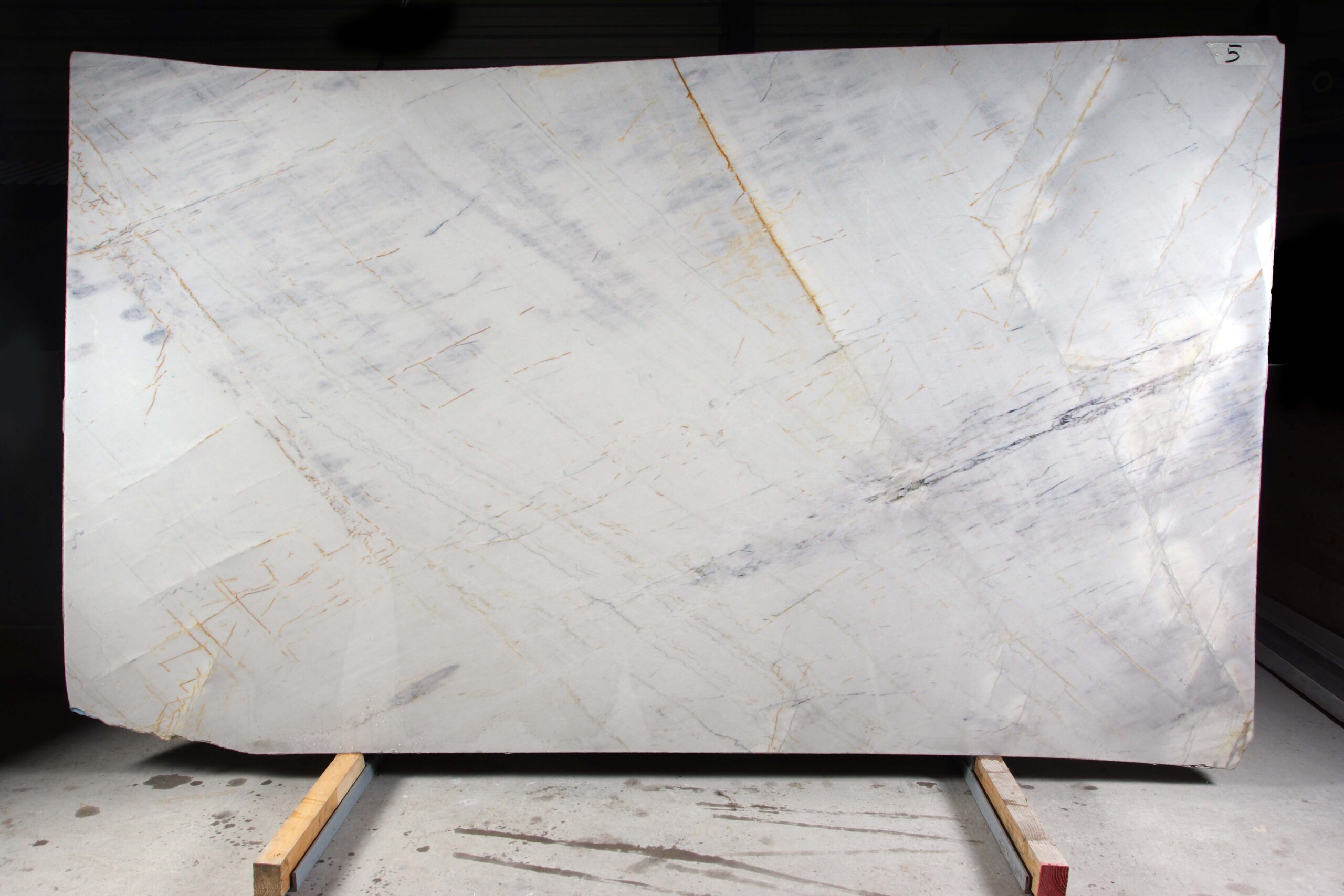Quartz or Quartzite: What’s the Difference?
Quartz and quartzite sound similar, but they are indeed quite different in composition, appearance, maintenance and overall durability. In this blog, we’ll take a closer look at each material to help you decide between two great options.
These two popular high-end countertop surfaces sound similar and some may interchange the terms. But they are actually quite different. So, which one should you choose, quartz or quartzite?
To find out, let’s compare and contrast the two materials.
Quartz or Quartzite?
To compare the materials, let’s first define them.
Quartz is a manufactured product starting with approximately 93% +/- ground quartz. Then, polymer resin and pigments are added to bind the quartz and create a wide variety of color and pattern options, even those that can’t be found in Mother Nature.

Quartz
Quartzite is an abundant, naturally occurring metamorphic rock.
Besides the obvious difference – quartz is manufactured while quartzite is natural – let’s look at a few different qualities to see which one is right for you.
Eco-Friendliness
Quartzite has an appeal to the eco-conscious homeowner because it is all-natural. It results from quartz-rich sandstone that has been altered through high pressure and heat in the earth. Then, it’s mined and cut into slabs.
However, this doesn’t mean quartz isn’t eco-friendly in its own way. Even though it’s engineered and considered man-made, it’s made up of natural quartz, which is one of the most abundant natural resources on earth.
Style
Quartzite’s soft, flowing look displays a neutral, earthy palette that can combine with any décor. It has gained popularity in recent years due in part because it is more durable than most natural marbles, yet provides similar marble-like veining patterns and colors that have been so much in demand.

Quartzite
On the other hand, quartz has a very broad appeal because of the almost endless color and design possibilities.

Quartz
Maintenance
Through the manufacturing process of the quartz products, the slabs become virtually non-porous. Therefore, they don’t require sealing.
Quartzites, however, should be sealed periodically to help guard against potential staining.
Both surfaces are hard, durable materials, but quartzite registers slightly harder. It’s also more heat resistant than quartz. Because of the binding polymers in quartz products, hot pads and trivets should always be used when taking things off the stovetop or from the oven, no matter what the brand name.
Both materials offer relatively low maintenance, though. Daily routine cleaning with a soft cloth or dampened sponge with a mild dish soap should take care of most needs.
Cost
When shopping for these products, you will find that quartzite typically costs more than most quartz products.

Quartzite
This price difference is caused in part by having to cut the mined quartzite into varying size slabs with diamond blades, an exacting process, as opposed to the uniform size and shape of poured and molded quartz slabs.
Conclusion
So, quartz or quartzite? Well, the decision is up to you and what best suits your family’s needs and completes your ideal space.
For your next countertop or remodel project, contact Eastern Surfaces to schedule a showroom appointment, where you can discuss these options with one of our knowledgeable sales associates.






